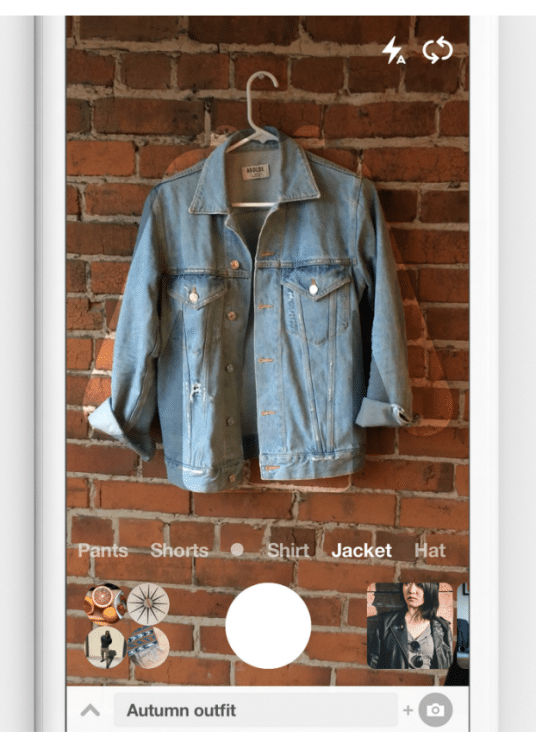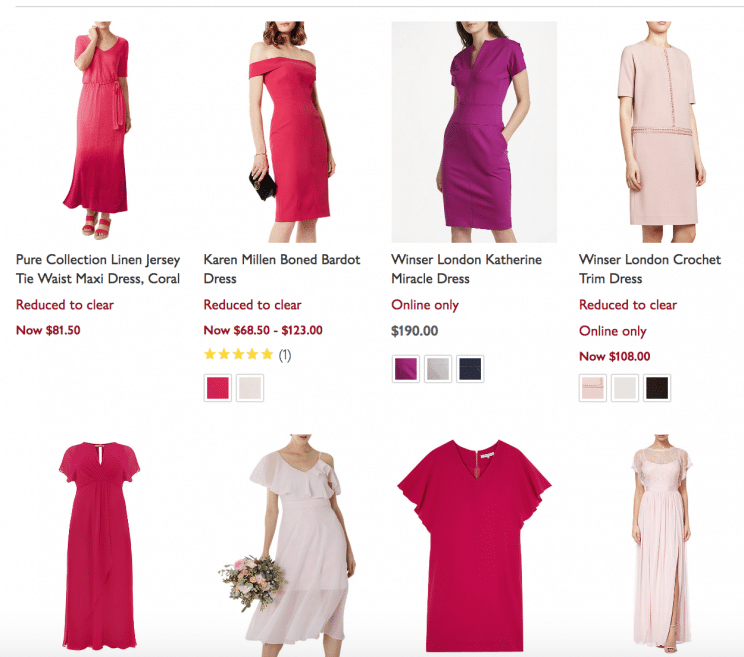Text-based search was never the perfect tool for ecommerce. Using text strings is a great way to search for other bits of text — websites, information pages, blogs, tweets — but it has never been good for describing objects or images.
And for many ecommerce businesses, that’s exactly what users are trying to do on a company website. Especially for the realms of retail, text search becomes a guessing game in which consumers have to guess how any given store is going to describe desired items.
It’s time for ecommerce companies to cater better to their consumers.
That’s the premise behind visual search for ecommerce. While TinEye and reverse-image searches have been around for a while, pure commercial application of the technology has just recently come around. Is it the tool that ecommerce has been waiting for? What do consumers think? And how soon do you need to adopt the tech to keep up?
Speaking consumers’ language: growing use of visual search
Alternate forms of search are on the rise, and images are at the center. Consumers are pulling inspiration from and shopping on dozens of platforms with ease, and popular platforms are skewing visual.
- The tech-savvy younger generation in particular is interested in visual search, with 69% of young consumers interested in using visual search, according to Accenture. This comes as no surprise when you think about the steady diet of images our daily technologies have started to pump out and how they’re affecting our shopping habits.
- In 2016, 44% of consumers used images to find ideas while online shopping, and close to 60% consulted a blog or social post on mobile while in-store shopping, according to Business Insider.
- Meanwhile, 75% of consumers reportedly are inspired to make purchases based on image and video content.
A prime example of a platform that’s harnessing these habits is Pinterest. Eighty-seven percent of Pinners reportedly have made a purchase because of Pinterest, a highly visual platform with shoppable images and image search. Take a look at their visual shopping app, which features an intuitive interface where users can snap items and instantly see shopping results:

[
Source]
It plays perfectly into the uptick in mobile use, and the interface looks exactly like every other photo-driven app. It’s fast and easy and speaks directly to what consumers are comfortable with.
It’s no surprise, then, that image and voice search are slated to make up 50% of all searches by 2020, and brands that make the shift to support new searches are projected to increase their revenue by 30%. Visual search is a tool that captures how people are interacting with the internet, apps, and shopping.
Discovery with visual search: opening consumers’ eyes to products
The companies that have already put visual discovery tools in place have seen returns. Pinterest’s Pinterest Lens, which uses visual search technology, saw users triple from April to May 2017, and those users were searching with Lens an average of >3x/day. In fact, its use postlaunch has been up 140% year-over-year.
Google started adding shoppable results to search starting in May 2016, and the company is continuing to roll out visual “shop the image” features and upgrades.

[
Source]
This was a decision that was made after Google saw a sharp rise in mobile searches that began with “where can I buy…” and led to an increase in customers’ shopping baskets. So now, even with text search for images, users are getting shoppable results, streamlining ecommerce discovery.
Pinterest is a great source of discovery data because they have been aggressive about pushing out visual search and shoppable tagging features on their platform. Google is responding directly to user-discovery inquiries.
It is very early for many companies adopting visual search, outside of those dedicated to pushing visual ecommerce boundaries, to start publishing their results, but we do know that discovery use cases are numerous. There is a huge potential for:
- Comparison shopping: see an item on another site, want to find a similar item elsewhere, can instantly compare
- Mobile shopping applications
- Superior search results for marketplaces
- Bridging brick-and-mortar and online sales: customer goes into a store, sees a cute pair of pants but isn’t ready to buy, snaps a picture and easily saves in a shopping cart or finds at a later date
- Shortening the time for users to find products by up to 5x
The key to discovery in visual search is that people want it, and they will use it when it’s an option. It cuts out the need for a middleman to describe a desired item with words. Take this search for “short pink dress” on John Lewis:

It’s obvious what a consumer is looking for here, but when the discovery fails, they get frustrated and bounce off the site. Visual search lets them go straight from picture to accurate results.
Discovery with visual search is more intuitive and faster than the search that has been used up to now. It is a way for consumers to find what they want, plain and simple. It is a direct response to how users want to discover and shop for products.
Conversion: early signs point to great results
Those who are implementing visual search have had pretty much only good things to say about its conversion rates, even without letting the hard numbers slip.
Boohoo, a fashion retailer with a visual search powered by Syte, implemented beta testing with consumers recently. Andrew Thomson, Boohoo’s ecommerce director, said earlier this year that, although it was too early for the company to give hard numbers, when shoppers used the visual search function, Boohoo saw a “positive uplift in purchase behavior.”
“We’ve seen enough to know that [visual search adoption is] going to happen; it’s going to become the norm,” Thomson said. “Of course we want it to drive conversion, too. And it will.”
Companies are also seeing benefits from shoppable image results on Google. Ulta reported a 35% increase in order value, and Target reported a 20% increase.
For personal assurance of a product match, visual search and visual features can make all the difference. Take Sephora’s try-on app, which allows people to test different shades of makeup on their own faces:

[
Source]
When shopping for luxury cosmetics, what if you could upload a photo of a celebrity whose skin tone matched yours and then instantly get that shade of lipstick or clothing item. Those types of decisions can push consumers over the edge into purchasing, and it’s a key way visual search aids in conversion.
For clothing as well, body type can play a big part. We’ve all seen something that looks right online but is absolutely wrong for our bodies. What if you could search for an influencer’s or celeb’s jeans just by uploading them, knowing they had the same body type as you? Or if you were shopping for your sister and she couldn’t try on your holiday gift? This is an ecommerce problem that doesn’t have to be solved with crazy futuristic VR try-ons; it can be visual search that pushes for conversion in these cases.
It’s not hard to see why consumers would be drawn to these features, even though they are new and unfamiliar. Ecommerce consumers want an easy way to find, browse, and shop items. They want accurate results and a user-friendly, personalized experience. Visual search helps all of that.
The best part? It’s ready now.
If all of this seems like snake oil, you’re wrong. Visual search is here now, and it’s here to stay. There is a huge appetite for this technology, and it’s only a matter of time before every major ecommerce retailer is implementing image-tech features. Luckily for you, Syte can implement this tech in 24 hours. Why not ask us what we can do for you?